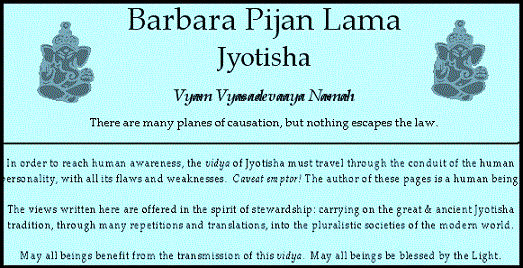
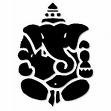
Vimshottari Dasha - Rashi - Gochara - Bhava - Graha - Ratna - Nakshatra - Amsha - Karaka - Varga - Bala
Shani occupies 9th-from-Chandra
- Traditional Jyotishavidya Ratna for Shani
- Serious Shanaicarya reaches maturity = age 36
- [energizing-identifying lagnesha for Makara indriya-lagna]
- [energizing-identifying lagnesha for Kumbha indriya-lagna]
- BPHS Vimshottari MahaDasha of Shani
-
BP Lama commentary Shani Mahadasha
- [Shani in classroom-1]
- [Shani in classroom-2]
- [Shani in classroom-3]
- [Shani in classroom-4]
- [Shani in classroom-5]
- [Shani in classroom-6]
- [Shani in classroom-7] [dikbala]
- [Shani in classroom-8]
- [Shani in classroom-9]
- [Shani in classroom-10] [svabhava]
- [Shani in classroom-11] [svabhava]
- [Shani in classroom-12]
- [Shani-Mesha] [nīcha]
- [Shani-Urisha]
- [Shani-Mithuna]
- [Shani-Karkata]
- [Shani-Simha]
- [Shani-Kanya]
- [Shani-Tula] [uchcha]
- [Shani-Vṛścika]
- [Shani-Dhanus]
- [Shani-Makara-Draco] [svakshetra]
- [Shani-Kumbha] [svakshetra] [mulatrikona if within 0-20 deg]
- [Shani-Meena]
- [Shani-yuti-Surya]
- [Shani-yuti-Chandra]
- [Shani-yuti-Mangala]
- [Shani-yuti-Budha]
- [Shani-yuti-Guru]
- [Shani-yuti-Shukra]
- [Shani-yuti-Rahu]
- [Shani-yuti-Ketu]
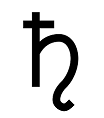
OM sham shanaishcharaye samah
Professor Shani
Sauri - Sauron
Shanicarya - Sanisvaraya
Shanaidev Bhagavan
अर्कपुत्र arka-putra = son of Sun
नीलवसन nīla-vasana = dark-blue visage
काल kāla = time
resides in
धर्म dharma = right, naature, character
पितृ pitṛ pittrü = father, forefather
चित्त citta chitta = thought, intelligence
गुरु guru = growth
आचार्य ācārya = teacher
Saturan - Sauran
Sætern - Saturnus
the seventh one
Satu = Saturday
kevan - kaiwan
kiyyun - kaiamanu - khima
kρονος - kronos
Ninurta
Anu
El - Eli
// The Old Sun // the best Sun //
occupies
the ninth house
iter
When you believe in things
That you don't understand
Then you suffer
Superstition ain't the way
~~ Stevie Wonder, superstition
Orthodox sacred teachings.
Tedious piety.
Fearful faith.
Limiting beliefs.
Rigid patronage.
Judgmental father. Sigh.

Larabanga, Ghana
Larabanga Masjid is the oldest mosque in West Africa
https://en.wikipedia.org/wiki/Larabanga_Mosque
it requires persecution of heretics and hostility to unbelievers;
it asks of its disciples that they should inhibit natural kindliness in favor of systematic hatred.
" With the ancient is wisdom;
and in length of days understanding."
Book of Job - Iyov 2:12
~~The Mirror 1895-1986 theosophy Jiddu Krishnamurti
" You may remember the story of how the devil and a friend of his were walking down the street,
when they saw ahead of them a man stoop down and pick up something from the ground, look at it, and put it away in his pocket.
The friend said to the devil, "What did that man pick up?"
" He picked up a piece of the truth," said the devil.
" That is a very bad business for you, then," said his friend.
" Oh, not at all," the devil replied. "I am going to help him organize it."
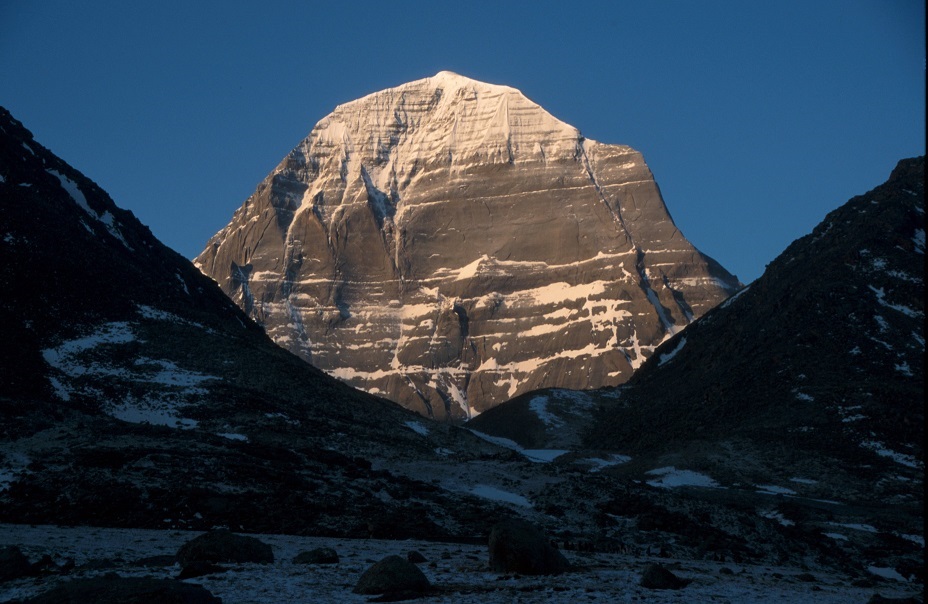
Mount Kailash = Kailas
Kai-lha-za
Kang-rin-po-chey
Kangrinbokay
Gang Rinpochey
said to guard the 7th chakra of planet Earth
EXAMPLES
[Shani-Mesha] [nīcha]
[bargaining-adjusting jaya-pati for Simha indriya-lagna] [inimical-medicating rogesha for Simha indriya-lagna]
check Kuja + Kuja drishti to see the engine behind Shani's fearfully rigid, survivalist materialism
[class-conscious racial ideology] [fear-based, unfairly strict catechism] [old priesthood of fire and blood]
[rigid fear of systematically invasive beliefs] [brutal imposition of orthodoxy] [maintains the lawful doctrine of first-arrivers]
[rogesha imbalanced competitive convictions] [jaya-pati lifepartner may be principled yet harsh haggler]
[intimidated aggrieved deal-making father] [father may have primitive dominating behaviors or brain challenges]
-
POTUS-pair-45 fashion 1970- Melanija Knavs Trump [calculating-strategic Bharani-2] [Kopā Avaṣṭabdhā] + [Surya-yuti-Budha]
[witty-creative vidya-pati for Kanya indriya-lagna] [inimical-medicating rogesha for Kanya indriya-lagna]
[class-conscious financial ideology] [believes in traditional sound-color-music-tastes] [orthodox view of history] [maintains the fixed doctrine of valuation]
[old priesthood of money and pleasures] [lawfully enriched patriarchs] [unfairly strict catechism] [fear of punitive religious values]
[rogesha imbalanced traditional convictions] [vidya-pati benefits heritage music, children, and patronage]
[intimidated aggrieved creative preservationist father] [father-figure may be a financial ideologue, conserver of values, traditional musician, sound-and-language teacher-preacher]
-
POTUS-pair-18 Civil War 1826-1902 Julia Dent Grant [political-theatrical Mriga-1] [Mriga-Shani-yuti-Ketu-Rohiṇī] [Shukra-5 parivartamsha Shani-9]
-
Yentl 1942- drama-song-activist Barbra Streisand [profitable-connected Kṛttikā-3] [Shani-yuti-Guru] [Shukra-6 parivartamsha Shani-9]
-
R-E-S-P-E-C-T 1942-2018 Queen of Soul Aretha Franklin [regulatory-hierarchical Kṛttikā-2] [Shukra-5-Maha-parivartamsha Shani-9] + [Rohini-Guru-yuti-Mangala-Rohiṇī] [Rohini-Guru-yuti-Shani-Kṛttikā ]
[Yogakaraka homebound-securing bandesha for Tulā indriya-lagna] [Yogakaraka speculative-creative vidya-pati for Tulā indriya-lagna]
[class-conscious commercial ideology] [believes in business] [recites the platitudes of orthodoxy] [maintains superficial credenda]
[old priesthood of explainers] [lawfully announcing patriarchs] [strict administrative rules] [fear of punitive religious declarations]
[bandesha adversarial conditions for land ownership] [vidya-pati benefits realistic philosophy and pragmatic patronage] [intimidated dogmatic businesslike father] [father-figure may be a presbyter, politician, property-owner, schoolteacher]
-
POTUS-pair-04 hostess 1768-1849 Dolley Payne Madison [governing-regulatory Arudra-2] [Shani-yuti-Ketu]
[busy-collaborative sahaja-pati for Vṛścika indriya-lagna] [homebound-anchoring bandhesha for Vṛścika indriya-lagna]
[class-conscious ethnicly familiar orthodoxy] [believes in ritual] [maintains the ancient credenda] [old priesthood of explainers] [lawfully worshipping patriarchs] [strict rules for public morality] [fear of punitive religious customs]
[bandesha adversarial conditions for land ownership] [sahaja-pati benefits realistic understanding of business conditions and pragmatic patronage]
check Chandra and Chandra-drishti for Shani's comfortably unyielding, unmovingly established, protective rule-based ordering
[class-conscious culturally soothing orthodoxy] [firmly believes in strictly regulated seasonal rituals] [maintains the ancestrally normalized credenda]
[upholds the old customary priesthood of explainers] [legitimated the rhythmicly worshipping patriarchs] [imposes rigid rules for public ethno-morality]
[familiar fear of harsh ancient tribal laws ] [bandesha adversarial conditions for land ownership] [sahaja-pati benefits realistic understanding of business conditions and pragmatic patronage]
[dry disciplined dogmatic routinely habitual father-figure] [patriarchal-patrons may require heavy judgments on land-boundaries]
[cautiously ethical father-figure may be a presbyter, property-owner, schoolteacher, jurisprudential writer, or taciturn shopkeeper]
-
France-Emperor 1769-1821 Wars Napoleon Bonaparte [political-gaming Pushya-1] [Pushya-Budha-yuti-Shani-Pushya] [Pushya-Shani-9 parivartamsha Vaishva-Chandra-3]
-
POTUS-27 Dollar Diplomacy 1857-1930 William Howard Taft [political-gaming Pushya-1] [Shani-yuti-Shukra]
-
USA-Sen-Tenn VPOTUS Climate Change 1948- Al Gore [governing-regulatory Aśleṣa-2] [Naga-Mangala-yuti-Shani-Naga]
***
-
England-Queen 1533-1603 Armada Elizabeth-1-Tudor [ceremonial-displaying Pushya-1]
-
POTUS-pair-38 Addiction Recovery 1918-2011 Betty Bloomer Ford [transformative-disguising Pushya-4] [Shani-9 parivartamsha Chandra-4]
[preserving-collecting dhanesha for Dhanus - Haya indriya-lagna] [busy-collaborative sahaja-pati for Dhanus - Haya indriya-lagna]
[class-conscious dramatic ceremonial orthodoxy] [believes in divine right of kings] [maintains the celebrated credenda] [old priesthood performs mandatory bright display] [lawfully golden costumed patriarchs] [strict rules for public theatre] [fear of autocratic religious punishments]
[dhanesha volatile conditions for heritage banking-finance] [sahaja-pati benefits realistic understanding of business conditions and pragmatic patronage]
[rigidly disciplined dogmatic showy father] [father may impose commercial judgments] [father-figure may be a presbyter, banker, curator, writer, or shopkeeper]
-
Iran-Shah 1772-1834 Fat'h Ali Shah Qajar + Surya
-
Moonies 1920-2012 Rev. Sun Myung Moon [political-ceremonial Pūrvaphalgunī-1] [vargottamsha] [Shani-9 parivartamsha Surya-3]
-
Pope-264 John-Paul-II 1920-2005 Karol Wojtyla [ritualizing-defensive Magha-4]
[energizing-identifying lagnesha for Makara - Draco indriya-lagna] [conserving-entreasuring dhanesha for Makara - Draco indriya-lagna]
check Budha and Budha-drishti to source Shani's responsibility to provide orderly, logical, helpful assistance
[class-concious logically calculating orthodoxy] [believes in service] [maintains the minsterial credenda] [old priesthood continues mandatory exploitations] [lawfully argumentative patriarchs] [strict rules for public complaint] [fear of mistreatment from religious infractions]
[dhanesha volatile conditions for heritage banking-finance] [lagnesha benefits realistic understanding of laborers and pragmatic patronage of servants]
[rigidly disciplined dogmatic unsatisfied father] [father may impose strategic judgments] [father-figure may be a presbyter, banker, curator, minister, worker-oppressing politician]
- Newspapers 1863-1951 plutocrat William Randolph Hearst [fantasizing-conceptual Uttaraphalgunī-4] + [Aryaman-Shani-yuti-Guru-Chitra]
[Shani-Tula] [uchcha]
[energizing-identifying lagnesha for Kumbha indriya-lagna] [researching-sojourning vyaya-pati for Kumbha indriya-lagna]
check Shukra and Shukra-drishtifor Shani's rigidly harmonizing, fairly adjudicating, reciprocally orderly systems
[class-concious balanced contractual orthodoxy] [believes in justice] [maintains the equity credenda] [old priesthood continues mandatory negotiations] [lawfully bargaining patriarchs] [strict rules for public adjudication] [fear of weighty institutional philosophy]
[vyaya-pati required regulatory engagement with isolated distant places] [lagnesha benefits realistic understanding of representation] [pragmatic patronage of brokers]
[rigidly disciplined dogmatic deal-making father] [father may impose principled legal judgments] [father-figure may be a presbyter, diplomat, professor, jurisprudential guide]
-
The Tower 1865-1939 Symbolist poetry William Butler Yeats [bargaining-balancing Chitra-3] [navamsha-Shani-Tula-uchcha] [vargottamsha][uchcha-Chitra-Shani-yuti-Rahu-Chitra] [in 10th-from-Chandra]
-
The Mirror 1895-1986 theosophy Jiddu Krishnamurti [regulatory-ordering Arcturus-2]
[gainful-friendly labha-pati for Meena - Antya indriya-lagna] [contemplative-visionary vyaya-pati fpr Meena - Antya indriya-lagna]
[class-concious change-resisting orthodoxy] [believes in slow transformation] [maintains the initiatory credenda] [old priesthood continues mandatory rejuvenations] [lawfully controling patriarchs] [strict rules for public rebirth] [fear of weighty secret philosophy]
[vyaya-pati required regulatory force upon isolated distant places] [labha-pati Dhanayoga ruler of 11 occupies 11th-from-11] [pragmatic patronage of discovery]
[rigidly disciplined dogmatic undisclosing father] [father may impose hidden principled judgments] [father-figure may be a presbyter, surgeon, professor, master of disguise]
[dutiful-hierarchical karmesha for Mesha indriya-lagna] [friendly-gainful vriddhi-pati for Mesha indriya-lagna]
check Guru + Guru-drishti for defining source of Shani's rigidly principled doctrinal convictions
[class-concious orthodox catechesis] [believes in regulated inspiration] [maintains the archetypical credenda]
[old priesthood continues mandatory indoctrination] [lawfully ordained patriarchs] [strict rules for public religion]
[fear of weighty sacred philosophy] [pragmatic patronage of faith] [rigidly disciplined dogmatic pious father]
[father may impose conventionally principled judgments upon the sangha] [father-figure may be a presbyter, preacher, professor of law, conductor of profitable old ceremonies]
[vriddhi-pati Dhanayoga ruler of 11 occupies 11th-from-11] [karmesha leadership from ideological convictions]
-
POTUS-25 Gold Standard 1843-1901 William McKinley [ideological-dogmatic Uttarāṣāḍha-1] [Atmakaraka] [vargottamsha] [Shani-9 parivartamsha Guru-10] [Shukra-yuti-Rahu]
-
POTUS-30 Price of Freedom 1872-1933 Calvin Coolidge [secretive-emerging Pūrvāṣāḍhā-4] [Atmakaraka]
-
Open Society 1930- currency-values George Soros [algorithmic-undulating Mūla-4]
-
UK-Master 2019- Archie H. M. Windsor [secretive Pūrvāṣāḍhā-4] [Shani-yuti-Ketu]
[Shani-Makara-Draco] [svakshetra]
[Yogakaraka doctrinal-guiding dharmesha for Urisha indriya-lagna] [Yogakaraka dutiful-exective karmesha for Urisha indriya-lagna]
[class-concious orthodox catechesis] [believes in the conventional rule of law-and-order] [steadily maintains the orderly credenda]
[old priesthood continues mandatory conformism] [lawfully governing patriarchs] [strict standards for bureaucratic regulation]
[fear of punitive religious beliefs] [dharmesha socially approved ideology] [karmesha leadership proceeds from ideological convictions]
[pragmatic patronage of universities and temples] [philosophical understanding limited by social norms] [prefers older respected religious teachings]
[rigidly disciplined dogmatic responsible father] [father may impose orderly principled judgments upon the sangha] [father-figure may be a presbyter, governor, director, professor of law, elite hierarch]
-
France-Queen 1755-1793 Madame Deficit Marie Antoinette [hierarchical-regulatory Uttarāṣāḍha-2] [vargottamsha]
-
Two Women 1934- luxury eyeframes Sophia Loren [calculating-strategic Dhaniṣṭha-2] [Atmakaraka] [Śrāvaṇa-Rahu-yuti-Shani-Shravista]
-
How Will I Know 1963-2012 Whitney Houston [ministering-complaining Dhaniṣṭha-2]
***
-
Truth Be Told 1933-2021 interviewer Larry King [messaging-commercial Śrāvaṇa-3]
-
Moral Majority 1933-2007 Rev. Jerry Falwell [messaging-commercial Śrāvaṇa-3]
-
Moneyball 1963- drama-commerce Brad Pitt [dramatizing-showy Dhaniṣṭha-1] [Dhaniṣṭha-Shani-yuti-Shukra=Vaishva][Dhaniṣṭha-Shani-yuti-Chandra-Vaishva]
[Shani-Kumbha] [svakshetra]
[mūlatrikoṇa if within 0-20 deg]
[philosophical-doctrinal dharmesha for Mithuna indriya-lagna] [mysterious-revealing randhresha for Mithuna indriya-lagna]
[popular proletarian orthodox catechesis] [believes in marketplace systems] [maintains the community credenda]
[old priesthood continues mandatory economic regulation] [lawfully interlinked patriarchs] [strict rules for mass-participation networks]
[fear of weighty scientific philosophy]
[dharmesha socially approved futuristic ideology] [conceals randhresha undisclosed associations] [pragmatic patronage of gainful friendships]
[scope of worldview is limited by collective norms] [prefers spaciously cosmological religious teachings]
[rigidly disciplined dogmatic empirical father] [father may impose orderly principled judgments upon the scientific materialists]
[revenue-seeking father-figure may be a fruitful presbyter, achieving governor, socialite director, fundraising professor, gridworked astronomer]
-
Heartbreak Hotel 1935-1977 Graceland Elvis Presley [arranging-contractual Dhaniṣṭha-3] [navamsha-Shani-Tula-uchcha] [mulatrikonan] [Dhaniṣṭha-Shani-yuti-Chandra-Varuna]
[bargaining-balancing yuvati-pati for Karkata indriya-lagna] [mysterious-revealing randhresha for Karkata indriya-lagna]
[class-concious conceptual orthodox catechesis] [believes in intuitive systems] [maintains the prayerful credenda] [old priesthood continues mandatory dreamworld regulation]
[lawfully contemplative patriarchs] [strict rules for otherworldly guidance] [fear of weighty abstract philosophy]
[yuvati-pati socially approved advising representation] [randhresha undisclosed clairsentience] [pragmatic patronage of meditative sanctuaries]
[scope of worldview is limited by subconscious norms] [prefers orderly compassionate teachings]
[rigidly disciplined dogmatic understanding father] [father may impose principled judgments upon the prophets] [father-figure may be a presbyter, governor, director, professor, visionary]
-
UK Queen 1819-1901 Empress Victoria-1 [calculating-analyzing Uttarabhadra-2] + [Kuja-yuti-Rahu] [Shani-9 parivartamsha Guru-7-nīcha]
-
Calif-Gov 1938- Moonbeam Jerry Brown [transformative- regenerating Uttarabhadra-4] [[Revatī-Surya-yuti-Shani-Andromeda] [Dhaniṣṭha-Guru-8 parivartamsha Andromeda-Shani-9]
theologically concrete, philosophically materialistic, rigidly orthodox, patriarchally fixed, doctrinally pragmatic
LEARNING PATHWAY of orthodox Shani-9 may involve necessary dealings with
-
approved worldview
-
rigid father
perfectionism and puritanism
-
principled convictions
-
class-conscious catechism
-
ordinance = rules for hierophancy
-
harsh orthodoxies
-
rigid deification, ossification of divine teachings, apotheosis
-
empirical limitations reduce the scope of theory
-
obligatory catechesis
-
preach-teach to obedient believers
-
Orthodoxy - religious, political, scientific
-
must preach the old doctrine
-
lawful, elder-respecting worldview
-
dogma of punishment
-
dignified dogma and dogmatism
-
sacred ordinance = strict rules for religious ranking, ordination
-
canon of holy scripture
-
canon of philosophical texts
-
religious fundamentalism
-
theological orthodoxy
dharma (9)used for social ordering purposes [Shani]
-
cautious, conventional father-figures
-
must maintain the old beliefs
- wisdom ossification (making into bones)
-
orthodox paradigm of belief
- rigidly structured lawful and materially defined doctrine
- elder patrons, lawful priesthood, hierarch, presbytery
- resistance to change in catechism
international law
-
POTUS-27 Dollar Diplomacy 1857-1930 William Howard Taft [Shani-yuti-Shukra] worked from a paradigmatic viewpoint of constitutional law and economic justice, which he applied to every political and administrative assignment, including his judiciary roles.
father may hold roles such as high priest, professor, rabbi, imam, religious judge, sermonizer, proselyte, old Believer. ]
doctrinal minimalism, reducing belief to a materially provable skeleton
obligatory duty limits the availability of higher understanding, global perspective, philosophical discourse
strict religious rules, usually maintained by elders
class-conscious belief systems
conformist high-teachings impose material consequences upon exceptionalist behavior
intimidated by difficult philosophical decisions
stiff hips; seizure of sacral plexus
limits who is a permitted friend (11) who is a permitted collaborator (3) who is a permitted physician (6)
father is strict, fearful, uncreative, lawful, separated, conventional, materialistic, punitive. Or blocked; he follows the letter of the law rather than the spirit of the law
Professor Shani's classroom in bhava-9 environments = patrons, professors, pitri, priest, panditi, popes, episcope, pater-nostra, philosophers, patriarchs, holders of patrician entitlements
- fearful respect toward the father-figures
- fear of professors
- responsibility to constrain the scope of doctrinal interpretation,
- responsibility for maintaining the orthodoxy of universities
- resistance to change of theoretical viewpoint
- maintaining the social-ordering of the wisdom classes (priests, professors)
- imposing rules of uniformity upon of non-local culture
- punitive globalism
- limiting the range of philosophical vision
- applying conventional rules to the discourses of higher understanding
Shani's instruction = stop matching that which is not lawful to you (stop matching the fears of others) and proceed with care.
No-exceptions Orthodoxy
Rigid paradigm of beliefs and social judgment upon the material behavior of the believers
The details of the ideology are nearly irrelevant since one may become strictly adherent to any set of principles whether liberal progressive or severely conservative, whether piously scriptural or fully deconstructionist. Professor Shani demands strict, rigid, no-exceptions rule of law in an unbending framework of socially imposed decisions and consequences.
-
Pope-264 John-Paul-II 1920-2005 Karol Wojtyla [ancestral-ritualized Magha-4] KW was a steward of the Old Ways and protector of the rigidly anachronistic old doctrines in matters of family life. His title "Papa" led the faithful public to see KW as a paternal authority figure.
Naturally, if additional graha occupy bhava-9, then the paradigmatic belief becomes more complex and more flexible.
[Shani-Tula] [uchcha] for Kumbha indriya-lagna = more merciful in pursuit of equity in the total scope of the law.
[Shani-Mesha] [nīcha] (Dhanus indriya-lagna). Prone to theories of lawful origin, doctrines of first-arrived race or pioneer blood-based ideologies. Believers in competition [Mesha] for the right to hold privilege, but may structure the law so that competition is denied and elite privilege maintained for the initiators.
After Shani matures at age 36, His drishti benefits 3-6-11
[Shani-9] limiting, disciplinary, austerity-imposing drishti upon 11, 3, 6 is generally beneficial because Shani drishti is reaching upachaya bhava which improve with timer.
Law-based, scripturalist-materialist filter upon the great truths of religious wisdom
Unyielding ideologies and rigid ideologues.
Orthodox lineage conducted via patriarchal rituals of socially ranked priesthood
Socially approved recitation of religious creed. These types of announcements are not discursive nor do they involve any degree of critical thinking. The recitation of question-and-answer format within the approved catechism is a function of hierophancy (holy ranks) of institutional religion.
Professor Shani who abhors movement is generally unable to apprehend Spirit which is a moving energy. Shani is rarely engage the reality of divinity (literally di-ven the coming out of the spirit into the human world). Rather, professor Shani teaching in classroom-9 produces institutional ideology under the guise of religion and inspired belief.
afflicted Shani = Dogmatic preacher, punitive style, rigid and inflexible theologies, strict ideologue
yogakaraka Shani = duties of religious scholarship
[akashic memory patterning] of orthodox credenda
can result in heavily ritualized practices;
-
sober, austere, scarcity view of traditional priesthood
-
legal limits [Shani] upon access entitlement to see the Light of truth
-
regulatory resistance to change WRT ideology or philosophy
-
dogmatic conservatism; simplification of teachings; proletarian requirement for conformance in acts of public piety
-
weight of orthodoxy; may have rather little good humor in matters of religion nor is there time to discuss comparison to other beliefs. Religious rules must be followed.
-
constraints upon interpretation of meanings, texts, sacraments
-
materialism of spiritual teachings; fundamentalism
-
religious rigidity, ritualism, fossilized beliefs
-
one's own father-guru = long separation or unavailable
strict, conservative, anti-innovation approach toward sacred doctrine
-
must raise respectful children; religious indoctrination of the children is serious business
- scriptural fundamentalism
-
material idolization of sacred scripture
-
agent of change-resistance in areas of world travel, university studies, philosophy, theology (including civil religion)
-
obligation to function as a father-priest-teacher guide
9 = 11th-from-11th = revenues, fundraising, profits from the sangha
-
Moral Majority 1933-2007 Rev. Jerry Falwell took the slow and steady approach to cultivating the marketplace of religious donations. Over the period of decades, he worked lawfully [Makara] every day until his death as a university (9) administrator, apreacher (9), and a collector of tax-exempt donations. Not only did this Shani-steady method build remarkably large contributions to the 1980 and 1984 Republican political campaigns. Over those decades and from those monies, falwell eventually amassed a substantial privately held family trust.
Effort due to Lack of priestly, professing credibility (anti-Surya)
Professor Shani teaching in classroom-9 represents resistance to change which necessitates the effort that is required to achieve a consistently and credibly wise, theoretical, philosophical identity.
Parashari drishti to domains: 11, 3, and 6.
See: dealing with the negative expectations of Shani in bhava-9
-
All forecasts improve with planetary support from Guru.
-
Shani the Taskmaster functions best in Makara - Draco, Kumbha, and Thula.
Shani drishti into bhava-11
-
limits the economic income and one must work hard for whatever profit can be earned from the economic networks (11). religious convictions about humility, virtues of scarcity etc. do contribute to the chronic earnings situations in which one is overworked and underpaid.
Shani drishti into bhava-3
-
limits the self-made financial wealth . Starting a business or realizing much growth in administrative roles = pinched by Shani. Often required to communicate in a strict protocol.
Shani drishti into bhava-6
-
Beneficial results. Limits the impact of enemies and reduces threat of divorce, accusation, litigation, indictments, and other overt conflict. However Professor Shani drishti to 6 increases the obligation [Shani] to complete a ministry of service. If graha exist in 6, one may be required to engage in a medical or social service profession.
Ossification of Wisdom.
Shani in Dharma Bhava-9
Fear of change which produces resistance to change in matters of philosophical and sacred teachings and teachers.
-
Orthodox practice, patriarchal belief structure
-
unless Shukra or Chandra in kendra = may be rigidly adversarial to the matriarchal view (9 = shad-ashtaka 6-8 from 4)
-
usually affiliated with the conventional mainstream religion of their times - not an outsider, not an innovator
-
sober and diligent [Shani] in the teacher-preacher role (9)
-
Must work to earn validation from The priesthood of the Fathers (9).
-
Works to be fully approved, in compliance
-
goal = adjudged as perfect under the rule of statutory law .
-
Survival fears based in [akashic memory] enforce the mandate to perform this work over and over again, until the ignorance is transformed into wisdom.
"Not wise enough" Shani-fear syndrome. Legalistic and often punitive view of sacred scripture and wisdom-paths.
Orthodoxy in Religious Belief and Public * worth-ship * worship (9)
Plebian Professor Shani teaching in classroom-9 either limits access to the higher philosophical discussions provided by a university education or else Professor Shani teaching in classroom-9 imposes a heavy work-duty in the university environment.
Professor Shani teaching in classroom-9 = a rigid thinker in matters of religion, due to fear of recrimination from religious authorities in a parallel life which may also be quite realistic in the present life.
Typically, an ideologue who repeats a fixed set of orthodox questions and answers = a rigid catechism. the fixity and orderliness of Shani-style public religious guidance (9) may well serve to show a stony but reliable path to the confused masses.
Returns to an older, more regulated, more structured religious practice - often in mid-life
May be a convert from a more liberal childhood religious upbringing to a more hoary, conservative adult doctrine.
Professor Shani teaching in classroom-9 casts His powerful 10th drishti upon bhava-6 which causes Professor Shani teaching in classroom-9 to regulate the march of exploited and disadvantaged classes (gana).
-
Professor Shani teaching in classroom-9's guidance is typically believed and followed by the lowest classes who benefit from reliable, consistent dogma which asserts a simple set of answers to life's largest questions.
-
By the same token, professor Shani teaching in classroom-9 style of preaching is classically ignored by the philosophically advantaged the educated elites who realized there is more than one way (multiples Guru) of believing!
Excellent placement for any sort of preaching functionary in large-scale institutionalized religious hierarchies. Effective regulator of belief systems.
Considered a pious and lawful person, respected for consistency and ability to resist the vicissitudes of scholarly fashion.
Purism in Priesthood
[uchcha] Shani = a diligent agent of social justice. Albeit the [uchcha] Professor Shani teaching in classroom-9 is also an upholder of orthodoxy and relatively more materialistic-realistic than other graha in 9 .
Better results = if Shani occupies a rashi of Shani, shukra, or Budha.
-
Better with any type of support from Guru.
Religious writing = a pre-incarnationally planned demand. Study of sacred texts is so slow and difficult as to become at times excruciating. Yet one plods on.
The attitude toward one's own father, one's own adult fulfillment of the father-role, priests, ceremonial religion, the guru, universities, professors, and sacred teachings is fundamentally lawful. Style of preaching and role-modeling of the principles of one's religion tends toward: stubborn, persistent, conservative and slow.
Resistance and delay toward wisdom, the guru and the father, sacred teachings, ceremonies and rituals, and university culture .
-
The father is distant and often gone.
The particular type of resisted wisdom will be indicated by the rashi and any companion graha.
Ironically, professor Shani teaching in classroom-9 = so busy working that there is very little time to develop spiritual wisdom. Professor Shani teaching in classroom-9 's capacity to energetically, personally engage [Mangala] with wisdom teachings may be reduced by a heavy workload
Habits of * worth-ship * worship and philosophical discussion are resistant to movement [Shani]. Professor Shani teaching in classroom-9 who wishes to move forward along the path of patriarchal religion (9), taking vows and practicing ritual devotion to deities, studying the scriptures of the tradition, will find such a project to be slow-going and demanding much time.
-
If Shani is not well disposed, may result in a sanctimonious expression of religious piety, based on materialistic ritual often strictly a public duty
-
reading of sacred texts is bound by received rules of interpretation;
-
As a preacher and a theologian, Professor Shani teaching in classroom-9 is more inclined toward public performative recitation and less inclined toward internalizing the wisdom message of the scripture
Try as one might to change the package of attributes, one's ability to pursue the priestly path is much burdened and impeded.
However priests and professors are much present in the environment, often as restrictive agents.
Lagnesha Shani-Kanya-9 for Makara indriya-lagna often produces an orthodox believer or ideologue who recites chapter and verse of sacred scripture which is perceived not as an inspirational guide but rather as a rule book = "born to preach (9) upon the obligation [Shani] to return to the exploitive [Kanya] rigid rules of the Old Times."
Lagnesha Shani-Tula-9 for Kumbha indriya-lagna often produces an orthodox believer or ideologue who = "born to preach (9) upon the obligation [Shani] to return to the eternal principles of Social Justice"
More comfortable results for indriya-lagna Maraka or Kumbha, and for indriya-lagna Vrishabha or Mithuna.
-
Rigid orthodoxies help prevent mental instability due to Shani-structuring, anti-movement drishti upon 11 (work to earn) 3 (mental traffic) and 6 (illness, accusation).
-
However, the same strict reality-interpretive rules upon which one may rely to prevent the chaos of alternative viewpoints can produce social isolation (11) depression (3) and servitude (6).
the privilege to enjoy the consolation of philosophy or even to indulge in comparative debate is much reduced due to great responsibilities when Shani inhabits 9.
Often the sign of a somber person socially identified with their somber beliefs and significant workload. Social duties accepted in the spirit of self-denial for the greater good. Believes in work.
-
The father is also a relentlessly working ideologue, whether of political, social, scientific, or sacred doctrine.
Moderated strictness produces easier results for Mesha indriya-lagna and Karkata indriya-lagna, from which Shani-9 will occupy a rashi of Guru.
More comfortable and pleasing results
-
Shani and Guru, the natural regulator of dharma bhava, are neutral toward each other.
-
Therefore, over time, and with a suitably plodding and conservative style, one's dedicated study of religious texts and a careful development of pre-approved interpretations will yield a satisfactory amount of religious development.
= an indoctrinator or religious functionary who maintains the socially approved system of philosophical beliefs and liturgical process. This person must apply sustained effort with limited resources (Shani the worker) toward the maintenance of temples for religious worship, ritual practice, sacred scholarship, universities, and philosophical associations.
Some difficulties or maturation required before obtaining gainfulness. Shani delays or restricts friendship and marketplace associations (11).
Beneficial for restraining enemies (6) but also prevents or forces great discipline upon the mental processes esp. communications.
- Caution replaces courage (3)
- delays but does not prevent gains of marketplace income (11)
- restrains the power of one's enemies (6) .
Expect some trouble with enemies, debts, and disease during Shani bhukti, but this polarizing catalysis is resolved via respect for the social law codes (9), workplace policies (6), and being neutral and modest in matters of public decorum.
Fully comfortable results from the teachings of Professor Shani must wait for the fullness of time, yet graha drishti of a papagraha into dushthamsha is beneficial.
In general, shani is fortunately positioned in dharmasthana, because Shani drishti - the aspect of limitation and constraint - affects only "upachaya" houses. Upachaya bhava * improve with time *. Therefore, shani in bhava-9 is difficult for a young person, but Shani will give quite good results with Maturity.
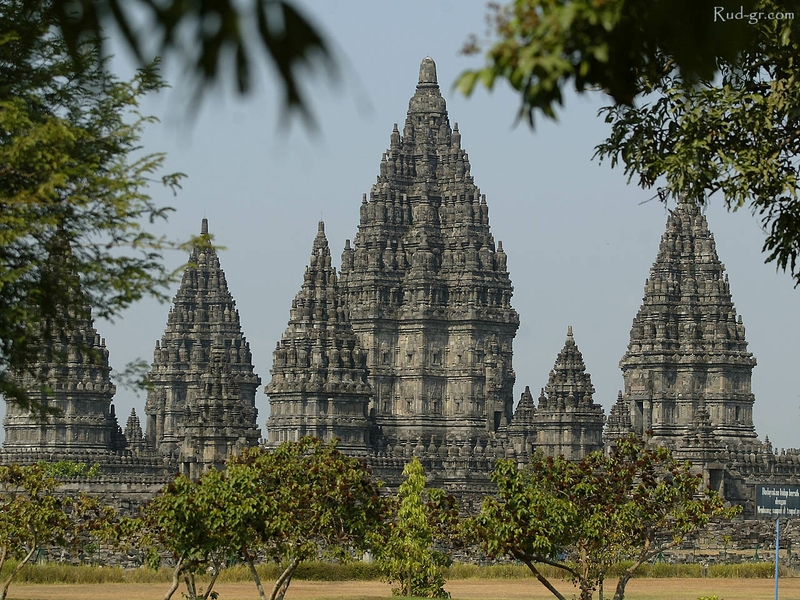
Prambanan Mandira, indonesia
Career during Vimshottari Dasha periods of a graha located in bhava-9 .
There are many beneficial effects from graha located in dharmasthāna including expansion of humanistic perspective, global awareness, and contact with wisdom-figures.
Nevertheless, the 10th-from-9 = bhava-6 indicating disharmony and ailment.
As a result, there may be a temporary experience of conflict in leadership roles, ailments related to job performance, unfair agreements, loss of contract, dissolution of equity, accusations, pollution, or other 6-related phenomena according to the rashi of 6 and any graha residing in 6.
If the karmesha occupies rogasthāna-6, the professional life remains robust, but the career duties tend to emphasize injury, indebtedness, exploitation, or toxicity, inter alia.
Careers in labor relations, social work, medicine, and other ministries of service are usually enhanced by the 6th-angle because these professions are already dedicated to service of the hurting. Their collegial relationships may temporarily suffer somewhat but the overall mission is stable.
Limited tolerance for impractical teachings and a grounded, earthy style of common-sense wisdom .
Benefits from outreach to the masses. Distrust of ritualism and dislikes frivolous ceremonies. May be atheistic or extreme religious minimalist, but is nevertheless a highly compassionate person who gives effective service to the poor and downtrodden.
Yet Shani here does favor comfortable results from compassionate care of the poor and sick (6) and Professor Shani teaching in classroom-9 may feel satisfied at death if one commits to a lifetime of dedicated service.
The guru-teacher, if any, hails from a modest background. Ideal for [akashic memory patterning] yoga of selfless service in difficult conditions. Understands and effectively helps those who can accept only very small increments of wisdom. Wants sacred teachings which directly address material needs.
-
Favors happiness through religious cultures which hold the virtue of humility and adherence to moral law in the highest regard
-
Difficulty in the relationship with overly conservative or formalized ceremonial religious practice. Preference for a more pragmatic or results-oriented spiritual teaching.
-
Harms the income and friendly socializing (11) and Professor Shani teaching in classroom-9 does more than one's share in teamwork settings (3).
-
Professor Shani teaching in classroom-9 may reject or reduce the traditional social-religious rites of passage such as marriage or baptismal ceremonies, preferring only a minimal"civil ceremony" to meet government requirements. (If Rahu + Shani, the life ceremonies may be conducted in a foreign tradition.)
Conservative, sober personality.
Heavy [akashic memory patterning] for the dad. He is Typically, alaborer or burdened man. Suffers lack of movement in some way, according to the rashi. He suffers from a rigid fear of change. Unyielding and negative beliefs.
Professor Shani teaching in classroom-9 tends to prefer a time-tested interpretation of sacred scripture and a reliable, lawful hierarchy of preachers priests and professors.
One's own indoctrination into truths occurs in the old-school style. The professor, the preacher, the proselyte, the guru-figures tend to utilize; rigid social ranks and class divisions.
;The native and one' father favor conventional beliefs and doctrine. One may feel obliged [Shani] to perform acts of public piety in order to satisfy the social requirement to demonstrate conformity of belief.
Children and Grandchildren
Granchildren and also to some extent one's own children ...may be delayed, or long separation, or they may provide a heavy material responsibility.
Shani in bhava-9 = deficiency of wisdom
core areas of initial lack of understanding + required repetition =
- 9 = religion, dharma
- 11 = gainfulness, income
- 3 = mentality, communications
- 6 = servitude, disagreement
A regulator of systems of dharma and interpretations of divine law.
a religious functionary who works the system of philosophical beliefs and liturgical process . May endure a scarcity of deep faith due to an equally profound realism about the limitations of human religion.
May be alienated from the hard-working father or the guru.
Shani in 9 = good for honesty because Shani resists pious facades.
Fear of faith, fear of religious vows.
Professor Shani teaching in classroom-9 Learning Curve =
philosophy, religion, wisdom-cultures, priesthood, and world travel
Professor Shani teaching in classroom-9 =s challenged to repeat many" practice" iterations while learning the art of applying religious and philosophical life principles in daily life.
Professor Shani teaching in classroom-9 tends to feel burdened by the weight of religious orthodoxy. A pragmatic nature encourages skepticism in the philosophical life view.
The father produces polarizing catalysis by self-contempt, denial of truth, or personal doubt. One may disavows the spiritual efficacy of ritual, accepts the validity of scripture only as a cultural artifact, and resists the change which results from living in the presence of the divine.
Native may have been a priest in another lifetime, who suffered a loss of faith due to materialistic corruption of the spiritual teachings.
Better results from Shani in [uchcha], svakshetra, or hospitable rashi of Budha or Shukrar.
Shani = karaka for government, bureaucracy, and social order. Typical of lagnesha Shani in bhava-9, one feels a personal responsibility to reinforce the conservative structures [Shani] of morally-principled social behavior.
Shani generally takes a negative, often punitive, approach to philosophy. He tends to be concerned with what"not" to do and resistance to change rather than suggestions for action or positive change.
Under influence of elderly Professor Shani teaching in classroom-9, hoary old things are perceived as more religious, more sanctimonious, and more wise.
Lagnesha Shani-Kanya -9 for Makara indriya-lagna = "born to preach (9) upon the obligation [Shani] to return to the exploitive [Kanya] structure [Shani] of social rules of the Old Times ."
Core Practice Environments which require repetitive drill and careful study
9 = father, traditional religious beliefs, temple discourses
11 = conventional methods of earning, especially manual labor and caste craft
3 = routine daily thoughts and conventionalized, scripted conversations
6 = workplace routines, servitude, being held into lower-rank or less prestigious jobs
- conservative * worth-ship * worship
- faith [Guru] supplanted by fear [Shani] = material acts of piety
- ritualism; literalism (fundamentalism); materialistic interpretations of religion
The father is elderly, punitively orthodox, or has a rigid personality. The guru, if any, is rigidly conservative and teaches his students to fear innovation or change.
The old way is the only way. The temple becomes a place of public duty and repetition of traditional rituals, rather than a sanctuary of learning and site of joyful praise.
There may be comfortable results from all of this if Shani = uttama or svakshetra, e.g. respect for elderly authorities and success in professions which slowly, slowly ascend the hierarchies of university, priesthood, et-cetera.
From Here to Enlightenment by Tenzing Gyatso
An Introduction to Tsong-kha-pa's Classic Text
The Great Treatise on the Stages of the Path to Enlightenment, p. 35 - 36"What we want to eliminate is grasping that is grounded upon falsification of the object, distortions that arise as afflictions grasp at the apparent substantial existence of an object.
Some texts say that mental states such as compassion and faith are, by their very nature, virtuous and thus cannot at the same time be afflicted mental states.
Yet, there are other texts that refer to afflicted compassion or afflicted faith.
For those of us who have not realized emptiness, when we generate strong devotion toward the Buddha perhaps there is within that faith, within that devotion, an element of grasping at the Buddha as substantially real.
This makes it an instance of so-called afflicted devotion.
Still, it is important to distinguish grasping rooted in falsification and distortion from the attachment, focus, or holding that we associate with compassion.
In our immediate experience, these two forms of grasping may seem the same, but in terms of the overall mental environment they are quite different.
Compassion is fact-based , while distorted grasping is not."
Thirunallar Temple in Karaikal, puducheri (Pondicherry) India
hosts the temple of Lord Darbharanyeswaran, aform of Lord Shiva.
Within the compound is the shrine of Professor Shani = Tirunallar Saniswaran .
counted from Tula indriya-lagna and Kanya lagna, shani becomes lord of putra bhava.
For indriya-lagna of Tula and Kanya, Professor Shani teaching in classroom-9 creates a Dhana yoga that is generally auspicious not only for money but other varieties of treasuries as well = vidya-pati-5 in dharma bhava.
Professor Shani teaching in classroom-9 can also be auspicious for Mesha and Meena indriya-lagna for which Shani = vriddhi-pati-11 ; the eleventh lord in the ninth bhava creates a dhana yoga.
Professor Shani teaching in classroom-9 is delays prosperity due to Shani's constrain-and-delay drishti upon the 11th house of gains/incomer.
Sober realism in matters of priestly education and religious liturgy can produce a distrust of ceremonial pomp and resistance to self-serving displays of religious piety . Yet Professor Shani teaching in classroom-9 is quite able to appreciate the value of structured human-to-divine communication (9) and one gains a pragmatic knowledge of how to serve the people's need for connection to their gods.
Psychologically, one bears a deep tendency toward anxiety and worry about the authenticity of sacred teachings, which is due to blockage upon access to the conventional socio-religious apparatus. Professor Shani teaching in classroom-9 is sincere in life, but pre-incarnationally planned inheritance of ideas about material laws which emphasize scarcity [Shani] in place of abundance [Guru] and physical hard work [Shani] in place of faith and wisdom [Guru] can restrain overall prosperity no matter how much effort Professor Shani teaching in classroom-9 invests in his duties.
The trick with Professor Shani teaching in classroom-9 is to develop a pragmatic faith based not on blind trust or childlike imaginings [Guru]. Professor Shani teaching in classroom-9 should to appreciate the Ben Franklin adage"the Lord helps them what helps themselves " .
Knowing that wisdom is not easily obtained in this life due to Shani's stubbornly pragmatic materialism, professor Shani teaching in classroom-9 stands ready to produce extra effort in religious and philosophical works, so that one may meet the Divine half-way, through modesty and hard work with very little easy glamour.
Past-life resistance to faith is generally based in having placed one's trust in outside religious structures, authorities, or belief systems and suffering the effects of the weakness caused by investing faith outside oneself.
Having faith in oneself and one's own efforts is exactly the same thing as having faith in the Divine, since the Divine is within and not without.
Locating the source of faith within oneself, without regard to external religious behavior and belief systems, yet continuing in conformist religious practice, is actually the best route to relieving the worry and anxiety about whether God will really help one in times of need.
The answer is yes, one is highly likely to be supported through the internal partnership of human and divine. But when Shani occupies the house of ceremonial religion, one is constrained to conformist practice in the outer appearance, and the Divine does not appear to be "customized" to one's own life circumstances.
Looking for God in external religion, one may not see the accurate reflection of one's own self in ritual and legacy belief systems. It may appear to be nothing more than "the opiate of the people"as Das Kapital 1818-1883 economics Karl Marx so piquantly wrote.
But underneath the superficial and conformist religious systems there is a layer of permanent and unbreakable connection between human and divine, and this layer is the place where Professor Shani teaching in classroom-9 with Shani in bhava-9 must begin to develop faith.
This is faith in the power not of ritual but in the power of one's own mind. The mind is inherently wise, and the Structure of communication between human and divine is built into the human design. That channel which carries the communication between human and divine, the channel of wisdom, realization, and faith, is always present and functioning in the mind of each person.
When Shani occupies the house of religion, professor Shani teaching in classroom-9 is not impressed by external displays of piety. However, to avoid the negative consequences of anxiety and worry due to lack of trust in divine support, one must invest in the power of the subconscious mind to evoke The financial wealth -bringing and wellness-ensuring"Channel 9" .
Shani in bhava-9, when properly appreciated, cuts out much of the baloney of organized religion and forces Professor Shani teaching in classroom-9 into a pragmatic and true faith in a personal religion not controlled by priests or cultural baggage.
Although worry and anxiety are not a fun reason to pursue the development of true faith, the results for wealth, wisdom, and life abundance can be very good - over time - with Shani in 9.
Marketplace associations are slowed but not denied; steady income through patient, conservative market behaviors and personal effort.
Not a marketplace maverick. Tends to prefer working as a salaried ('salt pay') employee rather than take risks with the income flow. Upstream/downstream relationships are blocked; you don't get connected (easily) to the people who can help you get what you want.
Father-figure and guru-guide
Father-figures may beidentified with working-class beliefs. Social connections (11) courage (3) and homework-problem-solving (6) may be strictly regulated, perhaps preaching a scarcity doctrine.
Shani-9 casts His glance upon the dushthamsha 3 + 6
generally beneficial outcomes due to pragmatism, maturity, realism in regard to small group interactions [3] and inherently conflicted environments [6]
Shani slow-down drishti restricts the speed of mental confusion through excessive wordiness (3) and Shani-structured, apparently mandatory resistance from enemies (6).
risk-averse Shani may However, be too cautious in undertakings and fearful of the ever-present negative underbelly of human behavior (6).
Professor Shani teaching in classroom-9 = a good and sincere person who suffers lack of faith, due to lack of qualified religious/moral guidance as a child. The father is absent or distant. Major trust issues in divine communication channel (Channel 9) - but like all Shani matters these are resolved through maturation. Shani provides the wisdom of practical, material - Over Time.
Shani in dharmasthāna may find that university governance duties, committee work, and other bureaucratic drudgery is nearly unbearable at times.
This is a pre-incarnationally planned peculiarity of Shani-in-bhava-9.
The joy of philosophical inquiry that is normally associated with dharmasthāna is nearly annihilated by Shani's plebian attitude and humorless focus upon rules.
Therefore employment as a university instructor will never be fully satisfying; and the same applies to self-study of philosophy or self-study of religious scripture.
The going is slow, but as with all things Shani rewards arrive in elder years, after a careful and non-judgmental habit of study and teaching has become deeply embedded in the daily routine.

La Cathedrale de Sainte Cécile,
Albi, tarn, France. Edifiée de 1282 à 1480
"The light of the body is the eye:
Therefore, when thine eye is single, thy whole body also is full of light;
but when thine eye is evil, thy body also is full of darkness.
Take heed therefore that the light which is in thee be not darkness."
~~ Gospel of Luke, 11:34-35


[How Readings Work] [Sample Sacred Jewels Ratna Recommendationn] [Seva]
 file update =
26-Jul-2024
file update =
26-Jul-2024
[Copyright © 1994-2024 by Barbara Pijan Lama] [Contact] [How to Request a Jyotishavidya Reading]
Barbara Pijan Lama Jyotishavidya Vedic Astrology Surya Sun Chandra Moon Mangala Mars Budha Mercury Guru Jupiter Shukra Venus Shani Saturn Rahu Ketu Graha Planets Dasha Timeline Calendar Nakshatra Navamsha Marriage Children Treasury Career Spiritual Wisdom Cycles of re-Death and re-Birth
The information on barbarapijan.com is provided for educational purposes only. Wishing you every happiness and continuing success in studies!